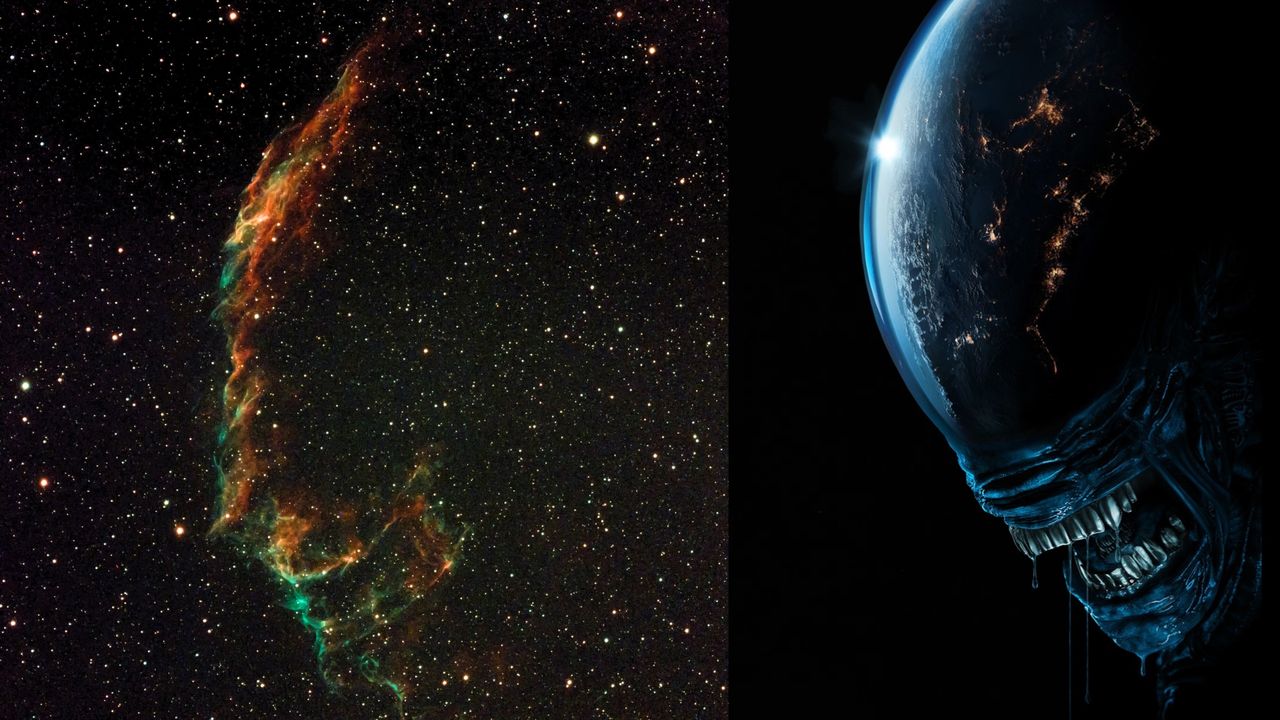A recent astrophotography session yielded an unexpected result when an observer aimed a Vaonis Vespera Pro smart telescope at the Eastern Veil Nebula. Instead of capturing the expected celestial beauty, the observer was met with a peculiar image resembling a Xenomorph from the “Alien” franchise. This intriguing photograph was created during observations conducted on August 8 and August 12, 2023, totaling approximately 1.5 hours of exposure time.
The Veil Nebula, located about 2,400 light-years away in the Cygnus constellation, is a remnant of a supernova explosion that occurred roughly 10,000 years ago. According to NASA, this nebula represents only a portion of the larger Cygnus Loop, formed from the remnants of a massive star about 20 times the mass of the sun. The eastern section, cataloged as NGC 6992, glows with ionized oxygen and hydrogen, creating sweeping arcs that vividly illustrate the stellar debris still expanding long after the star’s demise.
Utilizing a dual-band filter, the observer effectively mitigated light pollution and the glare from the full moon, revealing delicate tendrils of gas in the nebula’s structure. The resulting image, resembling the iconic alien creature, has sparked attention, particularly as it coincides with the recent launch of the Alien: Earth TV series, created by Noah Hawley. This series, which premiered on August 12 on FX and Hulu in the U.S., explores themes of corporate dystopia interwoven with Xenomorph horror.
For those interested in viewing the Veil Nebula, a telescope with at least a 4-inch (100mm) aperture is recommended, along with a nebula filter, such as an O III filter. This equipment is necessary to discern the faint filaments of the nebula against darker skies. Astrophotographers can utilize small refractors and short focal lengths, approximately 200–500mm, paired with long exposures or stacked images to capture the nebula’s intricate structure effectively.
Despite the challenges of suburban light pollution, where the observer was working in a Bortle 7 environment, the Vaonis Vespera Pro successfully captured the Veil Nebula’s essence. The Bortle scale, a nine-level system used by astronomers, categorizes sky darkness, with Class 1 representing pristine dark-sky sites and Class 9 reflecting bright inner-city skies.
As the excitement surrounding the “Alien” franchise continues to grow, the cosmic resemblance of the Veil Nebula to a sci-fi antagonist provides a captivating intersection of astronomy and popular culture. The nebula remains a popular target for both amateur and professional astronomers, proving that even amidst the stars, unexpected surprises await.
